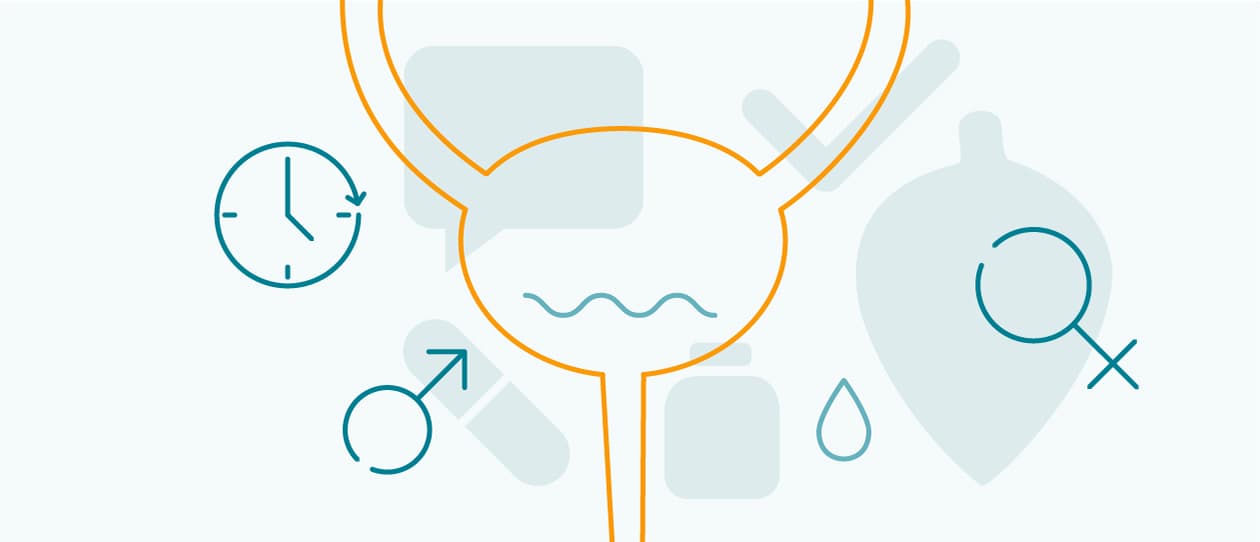
- Health hub/
- Tips & Advice on Improving your Everyday Health/
- Incontinence: Everything you Need to Know


Incontinence is the inability to control urination or defecation.
Urinary incontinence is more common and is discussed below.
The major forms include:
- Stress incontinence, in which exertion or sudden movement (e.g. exercising, sneezing or coughing) trigger urine leakage. Typically only a small amount of urine is lost.
- Urge incontinence, in which incontinence occurs after a sudden need to urinate. The urge to urinate (and consequently the incontinence) may be triggered by the sound of running water or other cues that suggest to the body that it’s time to go to the toilet. Drinking too much water, alcohol, tea, or coffee may also trigger the urge to urinate. The entire contents of the bladder tend to be released.
- Overflow incontinence, in which the bladder does not empty properly, causing the bladder to become overly full, with excess urine being passed.
- Functional incontinence, in which a person’s physical or mental capacity makes using the toilet difficult or impossible.
- In some patients, more than one of these forms of incontinence is present at the same time.
- Other associated symptoms may include nocturia (the need to get out of bed to urinate during the night), the feeling that the bladder has not completely emptied after urination is finished, poor flow of urine, bedwetting, and repeated urinary tract infections.
- The skin around the genital region may develop rashes or infections from being exposed to the urine for extended periods of time.
- Some people may become socially isolated due to embarrassment about their incontinence.
- Even if leakage does not occur, the need to go to the toilet urgently and often may also be an indication of continence problems.
Incontinence is an indication that the bladder is not functioning properly. It is often caused by weakness of the muscles of the pelvic floor, but may also be due to damage to the nerves in the region.
Stress incontinence is often a consequence of the muscles that control urination being damaged during the course of childbirth, and may affect up to a third of all women who have given birth. With the reduction of control of these muscles, urinary leakage occurs during periods of abdominal pressure (e.g. coughing, sneezing) . Being overweight may also cause stress incontinence.
Incontinence is more common in women than men, and becomes more prevalent with age. In older women, declining oestrogen levels may contribute to incontinence.
Prostate problems are a frequent cause of incontinence in men, and in some cases, it can also occur as an adverse effect of prostate surgery.
Nervous system problems (such as stroke, Parkinson’s disease or multiple sclerosis), may also lead to incontinence, while functional incontinence is associated with physical and mental disability.
Causes of temporary incontinence may include urinary tract infections, constipation, alcohol, drinking too much or too little fluid, and the use of some medicines (e.g. sleeping tablets, diuretics). Some women also become temporarily incontinent during pregnancy.
- There is no need to be embarrassed or ashamed about incontinence. There are many products and strategies available to help manage the problem and minimise its impact on your life.
- Work with your healthcare professional to develop a plan to help you manage your incontinence. This may include the use of pads or catheters, exercises to help maintain your pelvic floor muscles, and maintaining an adequate daily intake of fluid (1.5-2 litres of water per day).
- Don’t go to the toilet unless you need to go, and when you do go, take the time to fully empty your bladder.
- Pelvic floor exercises (sometimes referred to as Kegel exercises) strengthen the muscles that control the passing of urine, and consequently may help to manage incontinence. Pelvic floor exercises are as simple as repeatedly squeezing the urinary muscles for three seconds at a time. These exercises can be performed at any time of the day, without anyone else being aware that you’re doing them.
- Incontinence has many different causes, and in many cases can be easily managed. Don’t delay in seeking the advice of your doctor.




